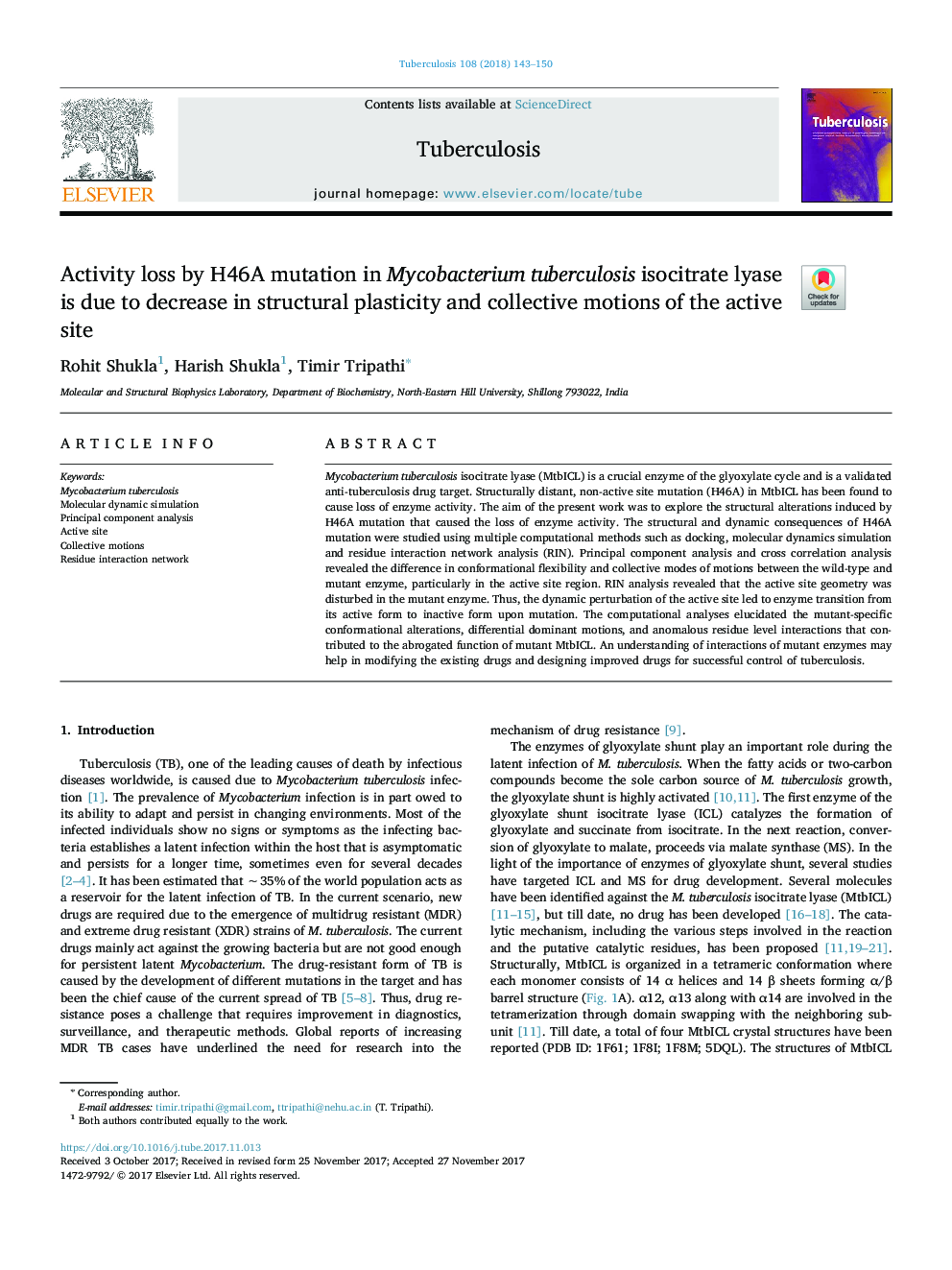| Article ID | Journal | Published Year | Pages | File Type |
|---|---|---|---|---|
| 8485200 | Tuberculosis | 2018 | 8 Pages |
Abstract
Mycobacterium tuberculosis isocitrate lyase (MtbICL) is a crucial enzyme of the glyoxylate cycle and is a validated anti-tuberculosis drug target. Structurally distant, non-active site mutation (H46A) in MtbICL has been found to cause loss of enzyme activity. The aim of the present work was to explore the structural alterations induced by H46A mutation that caused the loss of enzyme activity. The structural and dynamic consequences of H46A mutation were studied using multiple computational methods such as docking, molecular dynamics simulation and residue interaction network analysis (RIN). Principal component analysis and cross correlation analysis revealed the difference in conformational flexibility and collective modes of motions between the wild-type and mutant enzyme, particularly in the active site region. RIN analysis revealed that the active site geometry was disturbed in the mutant enzyme. Thus, the dynamic perturbation of the active site led to enzyme transition from its active form to inactive form upon mutation. The computational analyses elucidated the mutant-specific conformational alterations, differential dominant motions, and anomalous residue level interactions that contributed to the abrogated function of mutant MtbICL. An understanding of interactions of mutant enzymes may help in modifying the existing drugs and designing improved drugs for successful control of tuberculosis.
Keywords
Related Topics
Life Sciences
Immunology and Microbiology
Applied Microbiology and Biotechnology
Authors
Rohit Shukla, Harish Shukla, Timir Tripathi,
